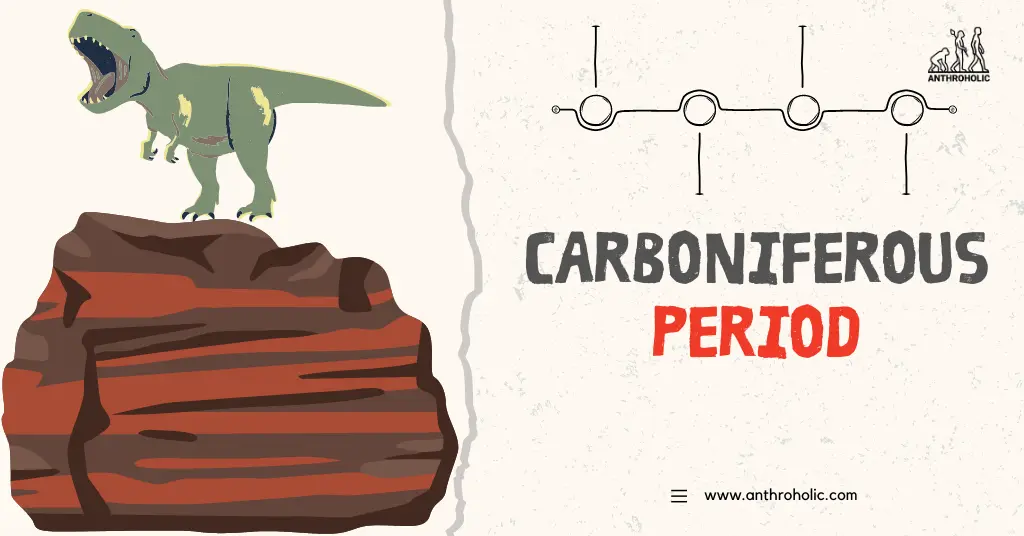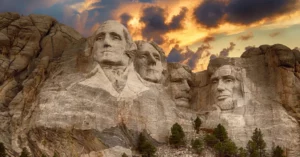AI Answer Evaluation Platform Live Now. Try Free Answer Evaluation Now
Carboniferous Period
The Carboniferous Period, spanning from approximately 359.2 to 299 million years ago, is a fascinating epoch in Earth’s geologic history. Derived from the Latin word ‘Carbonifer’, meaning ‘coal-bearing,’ the period was named for its extensive coal beds [1].

Carboniferous Era: Divisions and Timeframes
The Carboniferous Period is part of the Paleozoic Era and is further divided into two sub-periods: the Mississippian (Early Carboniferous) and the Pennsylvanian (Late Carboniferous).
| Sub-period | Timeframe (Million Years Ago) |
|---|---|
| Mississippian | 359.2 to 318.1 |
| Pennsylvanian | 318.1 to 299 |
These divisions are largely based on differences in regional rock strata, which reflect the significant changes that occurred in the Earth’s ecosystems during this period [2].
Climate and Atmosphere
During the Carboniferous period, Earth’s climate transitioned from hot and dry in the Mississippian to humid and wet in the Pennsylvanian [3]. This period was characterized by:
- High atmospheric oxygen levels, up to 35%, compared to today’s 21%
- High humidity, especially during the Pennsylvanian
- Significant ice build-up at the poles
This high oxygen environment facilitated the growth of many insects and amphibians, resulting in some of the largest land-dwelling arthropods known to have existed [4].
Flora and Fauna
The Carboniferous period was a time of significant evolution and diversification for both plant and animal life.
Flora
- Giant Horsetails (Calamites) and club mosses (Lepidodendron and Sigillaria) dominated the landscape.
- Seed ferns (Pteridosperms) and true ferns were also abundant.
- The first gymnosperms, including conifers, began to appear near the end of the period [5].
This flora contributed significantly to the formation of vast coal swamps, which would eventually give the period its name.
Fauna
- Terrestrial fauna included large amphibians, such as Eryops, and the first reptiles, like Hylonomus.
- The first winged insects appeared, and the high oxygen levels allowed them to grow to substantial sizes.
- Marine life flourished, with a wide variety of fish, shellfish, and coral species [6].
Carboniferous and its Economic Impact
The Carboniferous period has had a profound economic impact, as the vast coal deposits formed during this time have powered industrial development since the 18th century [7]. These coal deposits represent a substantial portion of the world’s current fossil fuel reserves.
Landscape and Geography during the Carboniferous Period
The Earth’s surface underwent profound changes during the Carboniferous Period. Two significant events that occurred were the uplift of the Appalachian Mountains in eastern North America and the formation of Pangea – the supercontinent that included all of Earth’s landmasses [9].
Appalachians
The uplift of the Appalachian Mountains is a testament to the powerful tectonic forces at play during the Carboniferous. The collision between the North American and African tectonic plates initiated the formation of this mountain range [10].
Formation of Pangea
The Carboniferous period was a time of significant continental movement that resulted in the assembly of Pangea by the end of the era. This supercontinent had a tremendous impact on global climate and sea levels [11].
Impact on the Carbon Cycle
The Carboniferous period played a pivotal role in Earth’s carbon cycle. The vast forests of the time pulled enormous amounts of carbon dioxide (CO2) from the atmosphere to form plant matter. When these plants died and decayed, they formed peat, which over millions of years transformed into coal, locking away a significant amount of Earth’s carbon [12].
Extinction Events
The Carboniferous period was not without its share of ecological crises. Two significant extinction events marked the end of this period: the Bashkirian extinction event and the Rainforest Collapse [13].
Bashkirian Extinction Event
The Bashkirian extinction, occurring approximately 315 million years ago, affected primarily marine organisms. Many brachiopods, fusulinid foraminifera, and rugose coral species went extinct during this event [14].
Rainforest Collapse
The Carboniferous Rainforest Collapse, around 305 million years ago, resulted in the loss of many rainforest species and the transformation of Earth’s landscape from dense forests to more open environments [15].
The End of the Carboniferous
The Carboniferous period ended with the occurrence of an ice age, which greatly affected the global climate and landscape. This shift led to the extinction of many species and allowed new types of plants and animals to evolve, ushering in the Permian period [8].
Conclusion
The Carboniferous period is a crucial phase in Earth’s geological history, witnessing significant evolutionary changes, climate shifts, and contributing extensively to our present-day energy resources. Studying this period enables us to understand the historical climate dynamics and life’s resilience and adaptability over time.
References
[1] Palmer, D., “The Chronology of the Geological Record,” Geological Society Memoir No. 10. 1983.
[2] Heckel, P. H., “Pennsylvanian cyclothems in Midcontinent North America as far-field effects of waxing and waning of Gondwana ice sheets,” Sedimentary Record. 2008.
[3] Cleal, C.J., Thomas, B.A., “Palaeozoic tropical rainforests and their effect on global climates,” Isotope Excursions in the Carboniferous: Causes and Consequences. Geological Society, London, Special Publications, 2005.
[4] Dudley, R., “Atmospheric oxygen, giant Paleozoic insects and the evolution of aerial locomotor performance,” The Journal of Experimental Biology, 1998.
[5] Stewart, W.N., Rothwell, G.W., “Paleobotany and the evolution of plants,” Cambridge University Press, 1993.
[6] Shear, W.A., Kukalova-Peck, J., “The ecology of Paleozoic terrestrial arthropods: the fossil evidence,” Can. J. Zool., 1990.
[7] Durand, B., “A review of the compositional variation of New Albany Shale kerogens: implications for retorting and coking studies,” Organic Geochemistry, 1984.
[8] Fielding, C.R., et al., “The end of the age of coal – A stratophysiographic model of the transition from the upper Carboniferous Coal Measures to lower Permian redbeds in north-east England,” Marine and Petroleum Geology, 2008.
[9] Ogg, J.G., Ogg, G.M., Gradstein, F.M. “A Concise Geologic Time Scale: 2016”, Elsevier, 2016.
[10] Bally, A.W., Palmer, A.R. “The Geology of North America: An Overview.” Geological Society of America, 1989.
[11] Torsvik, T.H., Cocks, L.R. “Earth History and Palaeogeography.” Cambridge University Press, 2016.
[12] Berner, R.A., Canfield, D.E. “A New Model for Atmospheric Oxygen over Phanerozoic Time”, American Journal of Science, 1989.
[13] Sahney, S., Benton, M.J., Falcon-Lang, H.J. “Rainforest collapse triggered Carboniferous tetrapod diversification in Euramerica”, Geology, 2010.
[14] Alekseev, A.S., et al. “The Devonian/Carboniferous boundary stratotype section (Petrovichi Ravine): Paleontological characteristics”, Stratigraphy and Geological Correlation, 1996.
[15] DiMichele, W.A., et al. “Climate and vegetational regime shifts in the late Paleozoic ice age earth”, Geobiology, 2009.




